|
Home
Welcome to BLS5 website. The 5th International Bio-Logging Science Symposium (BLS5) is scheduled to be held on 22-26 September 2014 in Strasbourg, France. Following on from four very successful earlier symposia in Japan, UK, USA and Australia, BLS5 aims to attract a wide range of researchers who use animal-attached electronic devices to study aquatic, terrestrial and aerial species, and their habitats. The term 'bio-logging' is interpreted broadly, encompassing not only logger-based technologies but also cutting-edge telemetry applications, as well as innovative systems using passive tags. The scientific scope of BLS5 is similarly broad, with the four themes being ordered by biological topic, rather than habitat or taxonomic group: A. Ecology and Environment (+) 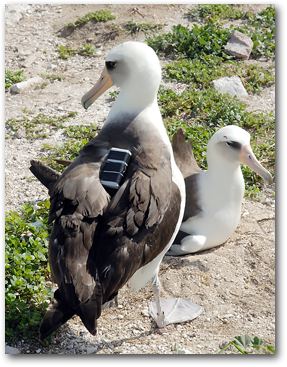 A.1. The ability to precisely locate and follow animal movements and their behaviour in their environment is central to ecology and conservation. Animal movements enable the identification of zones that are critical to the biology of a species. Identification of regions that are important for feeding, breeding and or migration are critical whether these be marine or terrestrial protected areas, ecological corridors or stop-over sites. Sub-theme A1 will explore real-time location using satellite-based telemetry for elusive species, fine-scale measurement of habitat use derived from GPS and/or dead reckoning locations, or long-term and large spatial scale monitoring of migration by means of geolocation tools. Central to this theme will be the inter-relationships between animals' distribution and the physical features of the environment. A.1. The ability to precisely locate and follow animal movements and their behaviour in their environment is central to ecology and conservation. Animal movements enable the identification of zones that are critical to the biology of a species. Identification of regions that are important for feeding, breeding and or migration are critical whether these be marine or terrestrial protected areas, ecological corridors or stop-over sites. Sub-theme A1 will explore real-time location using satellite-based telemetry for elusive species, fine-scale measurement of habitat use derived from GPS and/or dead reckoning locations, or long-term and large spatial scale monitoring of migration by means of geolocation tools. Central to this theme will be the inter-relationships between animals' distribution and the physical features of the environment.
Plenary speaker: Prof. Martin Wikelski
A.2. However, location alone provides an incomplete picture of how an animal is using its environment. Sub-theme A2 addresses how the simultaneous deployment of devices such as time-depth recorders, activity counters, accelerometers, or any other additional sensors, can improve our understanding of species' ecology. Understanding the mathematical rules behind movement patterns, viewing the environment as energetic landscapes, defining methods to improve tracking data analyses are all issues that will be examined in this session.
The development of tags that can sense the physical environment have changed the way we study animal habitats and the way we characterise these habitats. Tags that can measure environmental parameters, such as temperature, salinity, light, chlorophyll and oxygen, at a scale and resolution coincident with the animal's behaviour are now available. These tags are providing insights into the fine scale details of the animal's physical environment, but are also providing critical insights into the physical characteristics of otherwise difficult regions of the planet. Studies where animal-borne sensors are used to re-construct the environment will fit nicely in sub-theme A2.
Plenary speaker: Prof. Mark Hindell B. Behaviour and Behavioural Ecology (+) 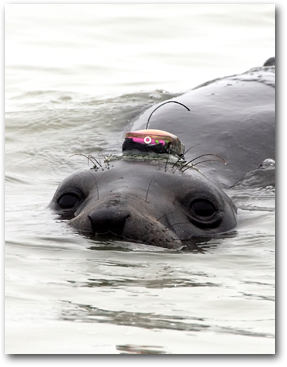 B.1. Physical laws provide a framework within which behavioural strategies are expressed. The field of biomechanics has benefited greatly from bio-loggers that allow scientists to measure movements in the wild that cannot be reproduced in the confines of a laboratory. Besides this fine-scale approach, sub theme B1 will also investigate behavioural flexibility at the individual level, through the investigation of foraging strategies and their evolution under various environmental conditions. Special attention will be given to those mathematical approaches that shed a new light on the complexity of a given behaviour or the interactions between prey and predators. B.1. Physical laws provide a framework within which behavioural strategies are expressed. The field of biomechanics has benefited greatly from bio-loggers that allow scientists to measure movements in the wild that cannot be reproduced in the confines of a laboratory. Besides this fine-scale approach, sub theme B1 will also investigate behavioural flexibility at the individual level, through the investigation of foraging strategies and their evolution under various environmental conditions. Special attention will be given to those mathematical approaches that shed a new light on the complexity of a given behaviour or the interactions between prey and predators.
Plenary speaker: Prof. John Frxyell
B.2. Traditionally, Bio-logging studies have, quite rightly, been primarily "individual-based" approaches, but we are now in position to address much more population level questions. The constant reduction in cost and size of devices on the one hand, and the emergence of data-loggers that can communicate on the other hand, have opened the door to large-scale deployments, providing the capacity to monitor population (rather than individuals), as well as the possibility to investigate proximity contacts between individuals, communication (via acoustic recordings), social strategies and social networks. Sub-theme B2 will be attractive to both the long-time bio-logging users and to the new category of users who come from the field of animal behaviour.
Plenary speaker: Prof. Rory Wilson C. Physiology and Medicine (+)  C.1. Energy is the central currency in eco-physiological studies. Bio-logging plays a pivotal role in estimating energy expenditure from free-ranging individuals, whether it is via heart rate recordings or more recently by using accelerometry. Over the past decade, increasing memory size combined with decreasing energy consumption by loggers have meant that metabolic strategies of free-ranging animals can now be studied over full annual cycles. This theme also encompasses studies of heart rate, brain activity and fine-scale body temperature measurements, as well as cutting-edge developments, such as measurements of oxygen concentration in the blood of free-ranging individuals. Sub-theme C1 will also accommodate studies that link the physiological status of an individual (e.g. hormonal status, telomere size, oxidative stress) to its performance as measured by bio-logging approaches. C.1. Energy is the central currency in eco-physiological studies. Bio-logging plays a pivotal role in estimating energy expenditure from free-ranging individuals, whether it is via heart rate recordings or more recently by using accelerometry. Over the past decade, increasing memory size combined with decreasing energy consumption by loggers have meant that metabolic strategies of free-ranging animals can now be studied over full annual cycles. This theme also encompasses studies of heart rate, brain activity and fine-scale body temperature measurements, as well as cutting-edge developments, such as measurements of oxygen concentration in the blood of free-ranging individuals. Sub-theme C1 will also accommodate studies that link the physiological status of an individual (e.g. hormonal status, telomere size, oxidative stress) to its performance as measured by bio-logging approaches.
Plenary speaker: Prof. Daniel Costa
C.2. The biomedical world has often been at the forefront of technological advances: medical doctors need the most precise and accurate measurements to ensure reliable diagnosis. Not surprisingly, the fields of biotelemetry and bio-logging have often taken technical advances originating from the biomedical realm and applied them to the field. In a reversal of roles, the new trend in medical science is to monitor "free-ranging" patients using techniques adapted from wildlife studies. Examples can be found in the studies that determine real-life movements and activity patterns of patients with metabolic disorders, like diabetes, and relate this to the characteristics of their urban environment.
Plenary speaker: Prof. Chantal Simon D. Around Bio-logging (+) 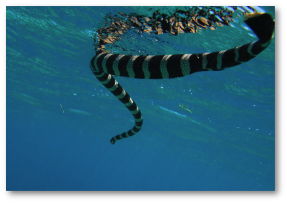 From its inception it has been recognized that progresses in bio-logging is driven primarily by technological progresses. Scientific questions are awaiting for new developments and new methods to further push the limits of our knowledge. Yet, care must always be taken to ensure bio-loggers do not modify the behaviour and affect the health of the individuals that we study. This final theme is concerned with bio-logging ethics, bio-loggers impact, new technologies, novel analytical and data display methods, as well as data management and sharing. From its inception it has been recognized that progresses in bio-logging is driven primarily by technological progresses. Scientific questions are awaiting for new developments and new methods to further push the limits of our knowledge. Yet, care must always be taken to ensure bio-loggers do not modify the behaviour and affect the health of the individuals that we study. This final theme is concerned with bio-logging ethics, bio-loggers impact, new technologies, novel analytical and data display methods, as well as data management and sharing.
Plenary speaker: Dr. Clive McMahon
The organizing committee is looking forward to welcoming you in Strasbourg.
 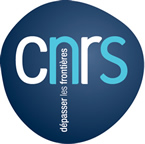   
   
 
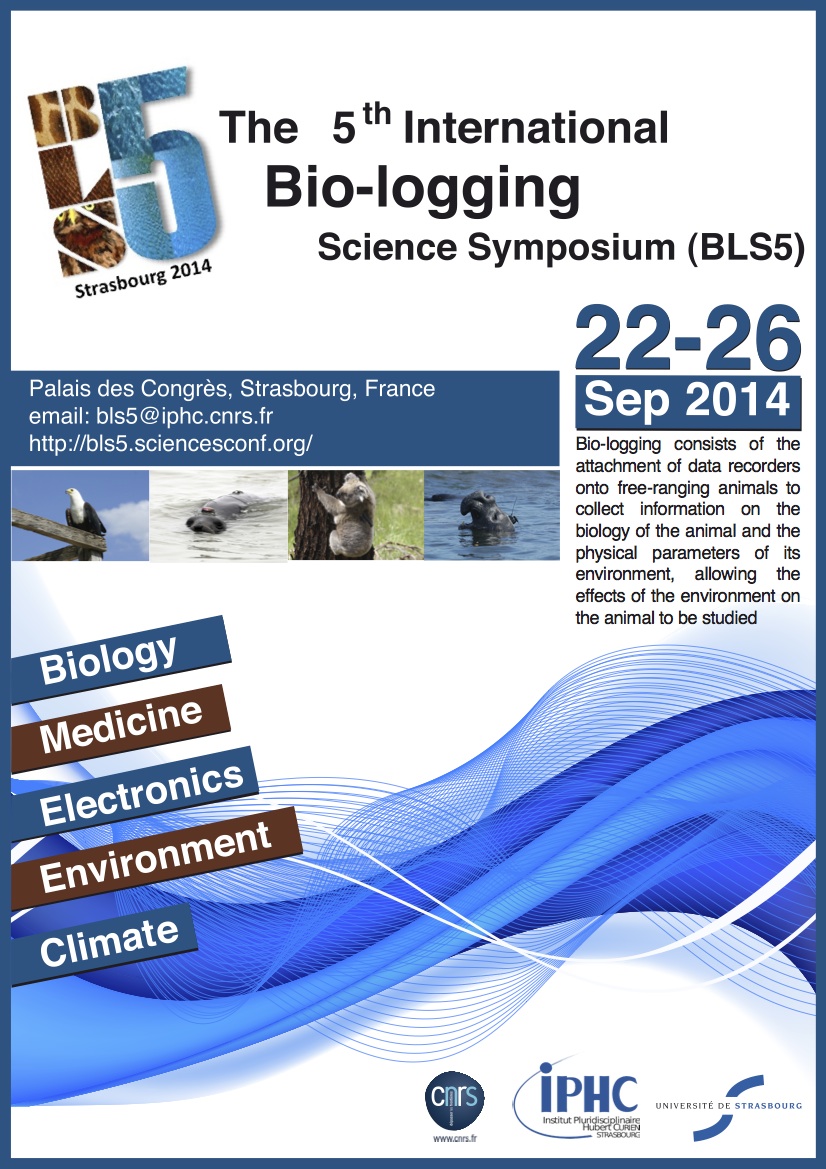
|
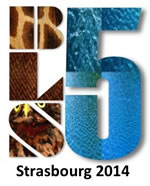
 A.1. The ability to precisely locate and follow animal movements and their behaviour in their environment is central to ecology and conservation. Animal movements enable the identification of zones that are critical to the biology of a species. Identification of regions that are important for feeding, breeding and or migration are critical whether these be marine or terrestrial protected areas, ecological corridors or stop-over sites. Sub-theme A1 will explore real-time location using satellite-based telemetry for elusive species, fine-scale measurement of habitat use derived from GPS and/or dead reckoning locations, or long-term and large spatial scale monitoring of migration by means of geolocation tools. Central to this theme will be the inter-relationships between animals' distribution and the physical features of the environment.
A.1. The ability to precisely locate and follow animal movements and their behaviour in their environment is central to ecology and conservation. Animal movements enable the identification of zones that are critical to the biology of a species. Identification of regions that are important for feeding, breeding and or migration are critical whether these be marine or terrestrial protected areas, ecological corridors or stop-over sites. Sub-theme A1 will explore real-time location using satellite-based telemetry for elusive species, fine-scale measurement of habitat use derived from GPS and/or dead reckoning locations, or long-term and large spatial scale monitoring of migration by means of geolocation tools. Central to this theme will be the inter-relationships between animals' distribution and the physical features of the environment.  B.1. Physical laws provide a framework within which behavioural strategies are expressed. The field of biomechanics has benefited greatly from bio-loggers that allow scientists to measure movements in the wild that cannot be reproduced in the confines of a laboratory. Besides this fine-scale approach, sub theme B1 will also investigate behavioural flexibility at the individual level, through the investigation of foraging strategies and their evolution under various environmental conditions. Special attention will be given to those mathematical approaches that shed a new light on the complexity of a given behaviour or the interactions between prey and predators.
B.1. Physical laws provide a framework within which behavioural strategies are expressed. The field of biomechanics has benefited greatly from bio-loggers that allow scientists to measure movements in the wild that cannot be reproduced in the confines of a laboratory. Besides this fine-scale approach, sub theme B1 will also investigate behavioural flexibility at the individual level, through the investigation of foraging strategies and their evolution under various environmental conditions. Special attention will be given to those mathematical approaches that shed a new light on the complexity of a given behaviour or the interactions between prey and predators. C.1. Energy is the central currency in eco-physiological studies. Bio-logging plays a pivotal role in estimating energy expenditure from free-ranging individuals, whether it is via heart rate recordings or more recently by using accelerometry. Over the past decade, increasing memory size combined with decreasing energy consumption by loggers have meant that metabolic strategies of free-ranging animals can now be studied over full annual cycles. This theme also encompasses studies of heart rate, brain activity and fine-scale body temperature measurements, as well as cutting-edge developments, such as measurements of oxygen concentration in the blood of free-ranging individuals. Sub-theme C1 will also accommodate studies that link the physiological status of an individual (e.g. hormonal status, telomere size, oxidative stress) to its performance as measured by bio-logging approaches.
C.1. Energy is the central currency in eco-physiological studies. Bio-logging plays a pivotal role in estimating energy expenditure from free-ranging individuals, whether it is via heart rate recordings or more recently by using accelerometry. Over the past decade, increasing memory size combined with decreasing energy consumption by loggers have meant that metabolic strategies of free-ranging animals can now be studied over full annual cycles. This theme also encompasses studies of heart rate, brain activity and fine-scale body temperature measurements, as well as cutting-edge developments, such as measurements of oxygen concentration in the blood of free-ranging individuals. Sub-theme C1 will also accommodate studies that link the physiological status of an individual (e.g. hormonal status, telomere size, oxidative stress) to its performance as measured by bio-logging approaches. From its inception it has been recognized that progresses in bio-logging is driven primarily by technological progresses. Scientific questions are awaiting for new developments and new methods to further push the limits of our knowledge. Yet, care must always be taken to ensure bio-loggers do not modify the behaviour and affect the health of the individuals that we study. This final theme is concerned with bio-logging ethics, bio-loggers impact, new technologies, novel analytical and data display methods, as well as data management and sharing.
From its inception it has been recognized that progresses in bio-logging is driven primarily by technological progresses. Scientific questions are awaiting for new developments and new methods to further push the limits of our knowledge. Yet, care must always be taken to ensure bio-loggers do not modify the behaviour and affect the health of the individuals that we study. This final theme is concerned with bio-logging ethics, bio-loggers impact, new technologies, novel analytical and data display methods, as well as data management and sharing.











